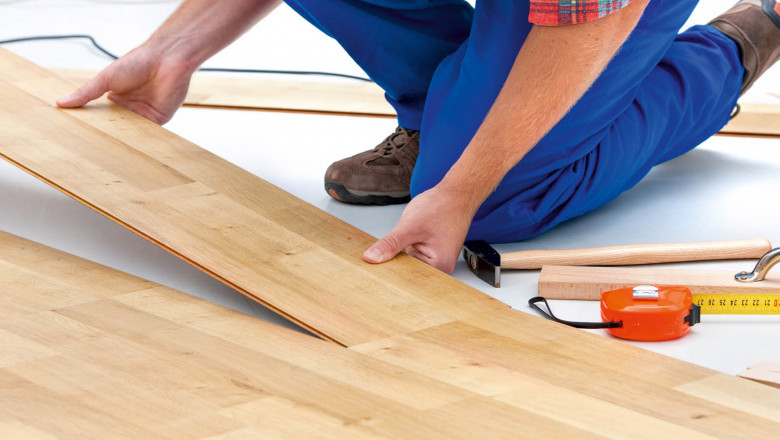views
The flooring market industry is evolving rapidly, driven by sustainability concerns, technological advancements, and changing consumer preferences. In 2025, the market is witnessing significant shifts in material choices, design trends, and smart technology integration. From eco-friendly options to high-performance flooring solutions, businesses are adapting to meet the demands of modern homeowners and commercial projects.
1. Sustainability is Driving Material Choices
Sustainability is a dominant force shaping the flooring industry. Consumers and businesses are actively seeking eco-friendly options, prompting manufacturers to focus on renewable and recyclable materials. Bamboo, cork, and reclaimed wood are gaining traction as sustainable choices due to their minimal environmental impact. Additionally, flooring made from recycled plastic, bio-based materials, and low-VOC (volatile organic compound) finishes are becoming more popular. Certifications such as LEED (Leadership in Energy and Environmental Design) are increasingly influencing purchasing decisions.
2. The Rise of Luxury Vinyl Flooring (LVF) and Hybrid Floors
Luxury Vinyl Flooring (LVF) continues to dominate the market due to its affordability, durability, and realistic wood and stone aesthetics. Waterproof and scratch-resistant properties make it a preferred choice for both residential and commercial spaces. Hybrid flooring, which combines vinyl and laminate technology, is also emerging as a strong contender. These products offer improved moisture resistance and enhanced durability, making them ideal for kitchens, bathrooms, and high-traffic areas.
3. Engineered Hardwood Over Traditional Solid Wood
While solid hardwood remains a timeless choice, engineered wood is gaining popularity due to its structural stability and lower cost. Engineered wood consists of a real hardwood veneer layered over a plywood or fiberboard core, making it less susceptible to moisture and temperature fluctuations. Advances in manufacturing techniques have also enhanced the aesthetic appeal of engineered hardwood, offering wider plank options, textured finishes, and enhanced durability.
4. Smart and High-Performance Flooring Solutions
Technology is revolutionizing flooring products with smart and high-performance features. Innovations like self-healing floors, antimicrobial coatings, and built-in heating systems are enhancing user convenience and hygiene. Smart floors with embedded sensors are also being developed for commercial applications, helping businesses track foot traffic, optimize space utilization, and improve safety measures. These advancements reflect the growing demand for functional, low-maintenance, and tech-integrated flooring solutions.
5. Bold Colors, Patterns, and Textured Finishes
Design trends in flooring are shifting towards bold colors, intricate patterns, and textured finishes. While neutral tones remain popular, deep greens, navy blues, and terracotta shades are making their way into modern interiors. Patterned tiles, herringbone, and chevron layouts add a stylish and dynamic touch to spaces. Matte and distressed finishes, which create a rustic or vintage appeal, are also gaining popularity. These design elements allow homeowners to personalize their spaces while staying in tune with contemporary aesthetics.
6. The Demand for Waterproof and Easy-to-Install Flooring
Ease of installation is another crucial factor influencing flooring trends. Click-lock systems, loose-lay planks, and peel-and-stick tiles are simplifying the installation process, making it accessible for DIY enthusiasts. Waterproof flooring options, including rigid core vinyl, SPC (stone plastic composite), and WPC (wood plastic composite), are also in high demand, especially in moisture-prone areas like bathrooms and basements. These innovations ensure durability and hassle-free maintenance.
Conclusion
The flooring market is evolving with a strong focus on sustainability, technological advancements, and innovative design trends. Eco-friendly materials, luxury vinyl, engineered hardwood, and smart flooring solutions are shaping the industry's future. As consumer demands continue to change, manufacturers are prioritizing durability, aesthetics, and easy installation features. Keeping an eye on these trends will help homeowners, designers, and businesses make informed decisions when selecting flooring solutions in 2025 and beyond.






















Comments
0 comment